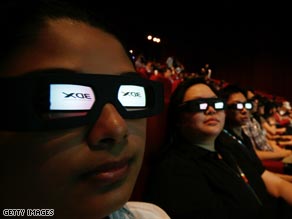
VUDU Inc. is making its way out of the set-top box business and into consumer living rooms on consumer electronics devices, starting with high-definition televisions (HDTVs) from LG Electronics Inc. (London: LGLD; Korea: 6657.KS) .
VUDU announced yesterday that its service would become available on four upcoming LG HDTVs, including two LCD screens (42" and 47") and two plasma screens (50" and 60"). The addition of a VUDU channel on the TVs will enable consumers to instantly purchase or rent from VUDU's library of 15,000 video titles.
The new service, which will include the same user interface (UI) and library of content that is available on VUDU's set-top boxes, will use instant streaming technology rather than the download model that existing VUDU users have become accustomed to. So a high-definition title that would have taken up to three or four hours to download in the past will be viewable in a matter of seconds on LG HDTVs.
Titles will be available in a number of quality formats, from standard definition (SD) to 720p HD to the service's 1080p HDX video quality. VUDU videos are encoded in H.264 format and delivered via HTTP using an adaptive bit-rate technology that was developed in-house.
VUDU has encoded three version of each title and quality level,and the service seamlessly switches between different bit-rate files depending on the bandwidth that is available to the end user. By doing so, the company can ensure that users are watching the highest-quality stream that is available to them.
The deal with LG will give VUDU a new outlet for consumers to access its video rental and electronic sell-through service, without having to purchase one of VUDU's broadband set-top boxes.
Despite the fact that VUDU content was available exclusively on its own hardware prior to partnerships with LG and other CE manufacturers, Edward Lichty, the company's executive vice president of content and strategy, says VUDU has always planned to expand its distribution onto other devices.
"The reason it's now happening is because these devices now exist," Lichty says.
VUDU plans to increase its distribution with other CE devices, although the company is mum on the particulars. Lichty did note that the company has an existing partnership with Vizio, even though LG will be the first CE company to come to market with a VUDU-enabled device.
VUDU joins a growing number of content providers that are finding ways to bring their broadband services into the living room through Internet-connected HDTVs, Blu-ray players, and other devices. In addition to VUDU, the LG NetCast HDTVs will have content from Netflix Inc. , YouTube Inc. , and other Internet content providers.







